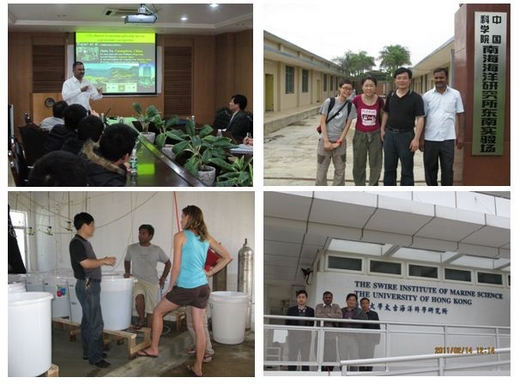Dr. V. Rajan visited the South China Sea Institute of Oceanology
At the invitation of Prof. ZiniuYu, Dr. V. Rajan visited the South China Sea Institute of Oceanology (SCSIO) on Nov. 11st, 2011.
Dr. V. Rajan came from University of HongKong, and he delivered a report at SCSIO during his visit. The report attracted more than 30 scientists and graduate students. The title of this report was “Larvae are in deep trouble due to rising CO2: Why and So What?”.
In the past two years, Dr. Rajan’s group and Prof. Yu’s team have been cooperating on the studies of OA effects on oyster larvae, in Zhanjiang mariculture experimental station of SCSIO. Several relevant proteins and genes are identified, and good progress has been made accordingly. Visitation and discussions between the two groups have been frequently done, and research papers are been written jointly.
“Ocean acidification” (OA) is a marine environmental change and stress worldwide, and it has started threatening corals, shellfish aquaculture, and even marine biodiversity. The carbonate ions that are in depletion this way concurrently reduces the saturation state of all forms of CaCO3 minerals, which makes marine organisms harder to form their shells and skeletons or even trigger their shells to dissolve. Reduced shell calcification rate (and thus growth rate), and metabolic depression are common symptoms of OA in early life stages. Using similar larval proteomic approach, Dr. Rajan’s group have been testing the hypothesis that the negative effects of OA on early larval stage (e.g. decreased shell growth) are mediated through differential expression of proteins associated with calcification, metabolism, and stress tolerance.
